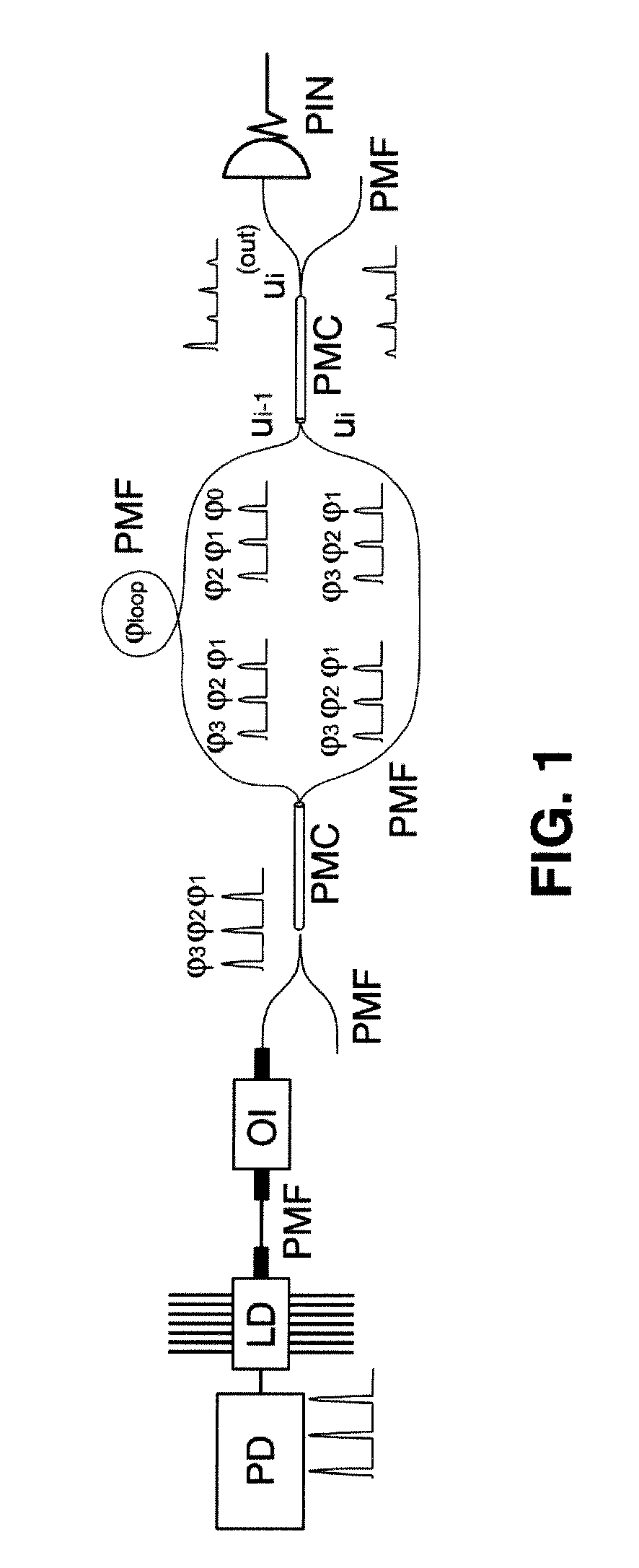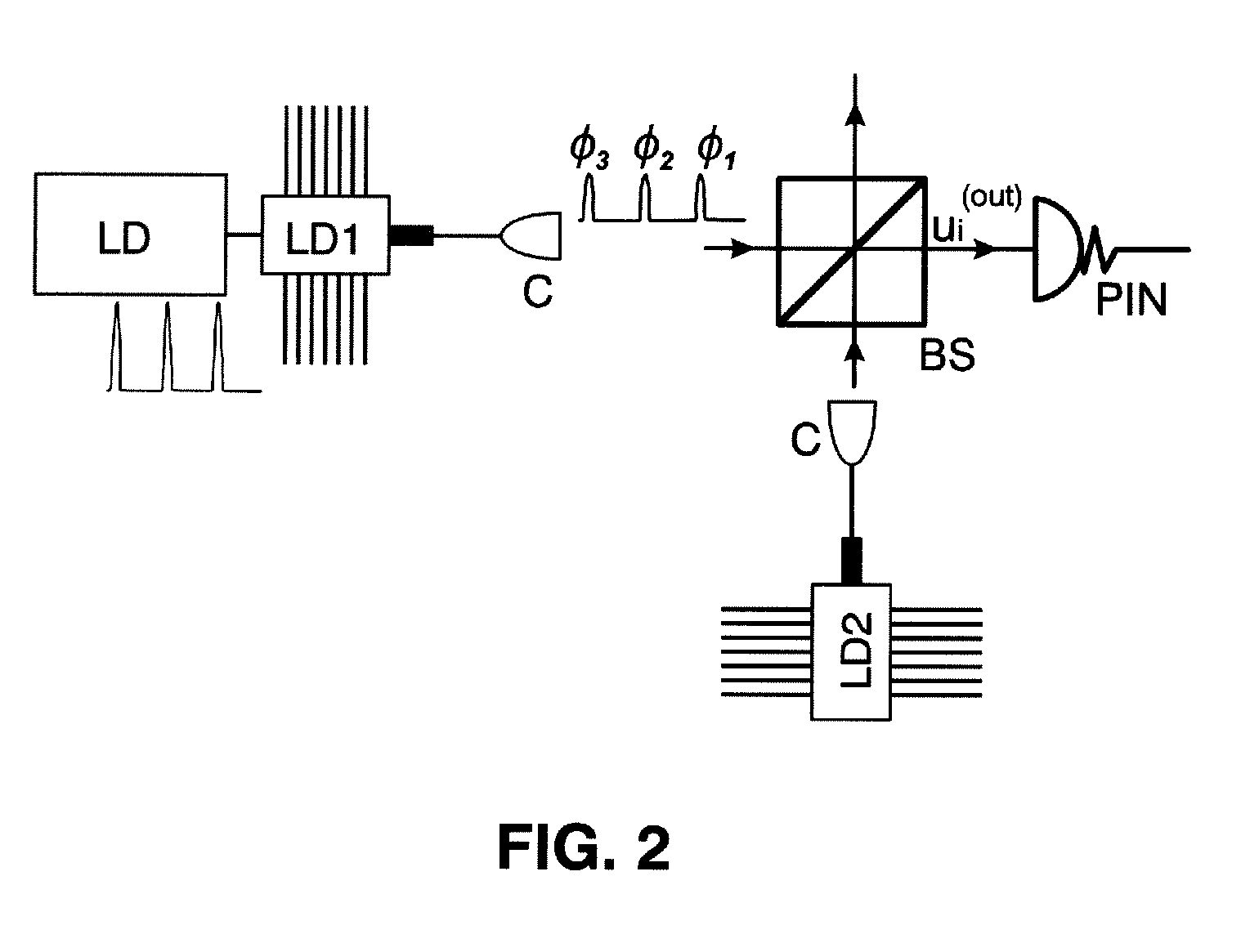Ultrafast quantum random number generation process and system therefore
a quantum random number and quantum random number technology, applied in the field of ultrafast quantum random number generation process, can solve the problems of a 500 mbit/s system random number generation rate, phase modulator itself intrinsically subject to drift, and more difficult to avoid classical nois
- Summary
- Abstract
- Description
- Claims
- Application Information
AI Technical Summary
Benefits of technology
Problems solved by technology
Method used
Image
Examples
Embodiment Construction
[0011]The invention is based on the transformation of random phase laser pulses into random amplitude pulses that can be detected with a fast photodiode, and the use of an electrical pulse driver. In the first embodiment (FIG. 1), this is achieved by using a single-mode laser source emitting an optical pulse train produced with the aid of an electrical driver with a given period, then splitting the optical pulse train into two equivalent optical pulse trains, delaying one of the trains by at least one period, recombining the pulses and finally detecting the resulting output intensities. In the second embodiment (FIG. 2), instead of splitting and delaying the pulses from the laser, one can combine the latter with another laser source and then detect the output intensities.
[0012]With reference to FIG. 1, a system for putting into practice the process of the invention comprises a laser diode (LD) as the oscillator, providing single-mode operation and high modulation bandwidth. A single...
PUM
 Login to View More
Login to View More Abstract
Description
Claims
Application Information
 Login to View More
Login to View More - R&D
- Intellectual Property
- Life Sciences
- Materials
- Tech Scout
- Unparalleled Data Quality
- Higher Quality Content
- 60% Fewer Hallucinations
Browse by: Latest US Patents, China's latest patents, Technical Efficacy Thesaurus, Application Domain, Technology Topic, Popular Technical Reports.
© 2025 PatSnap. All rights reserved.Legal|Privacy policy|Modern Slavery Act Transparency Statement|Sitemap|About US| Contact US: help@patsnap.com



